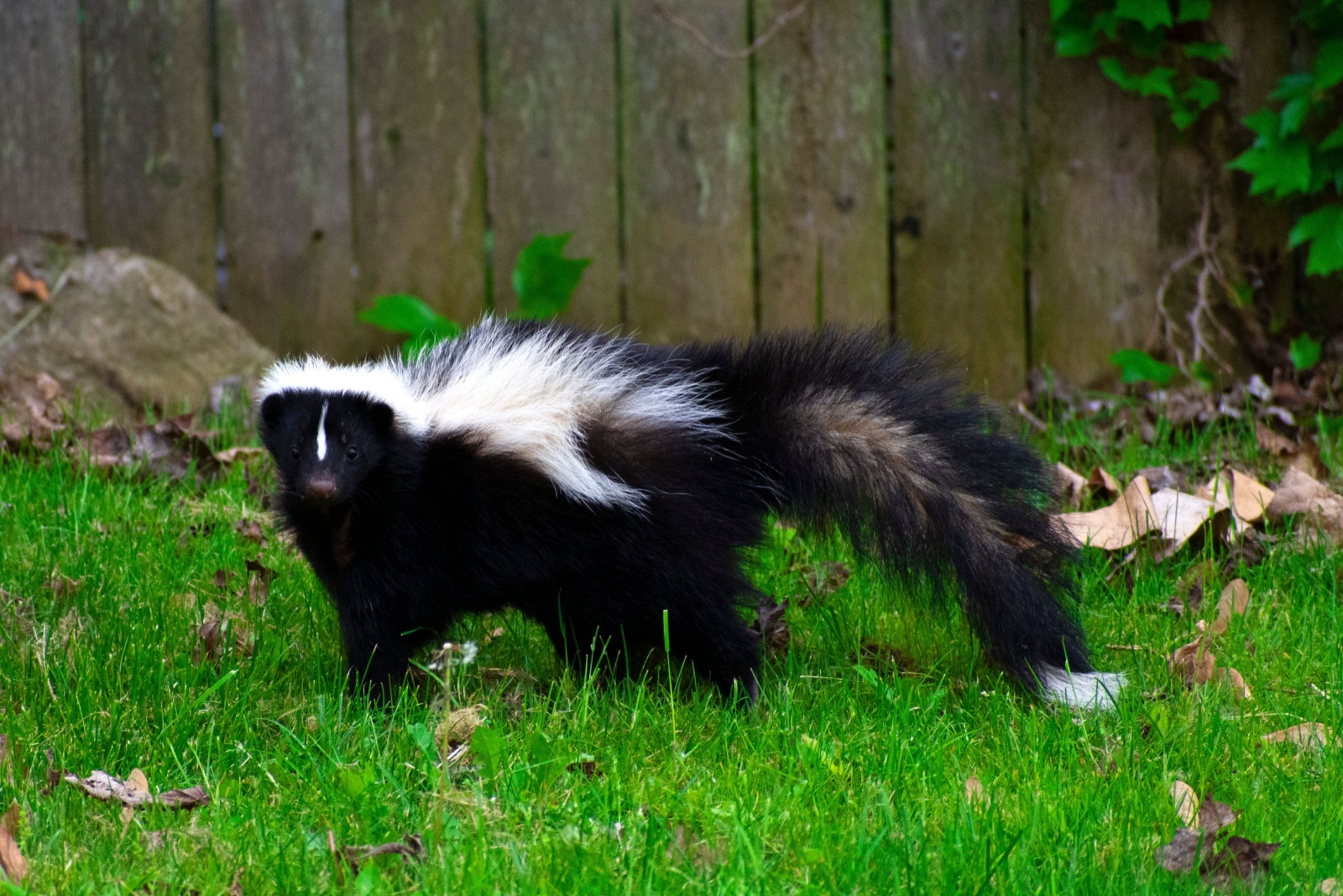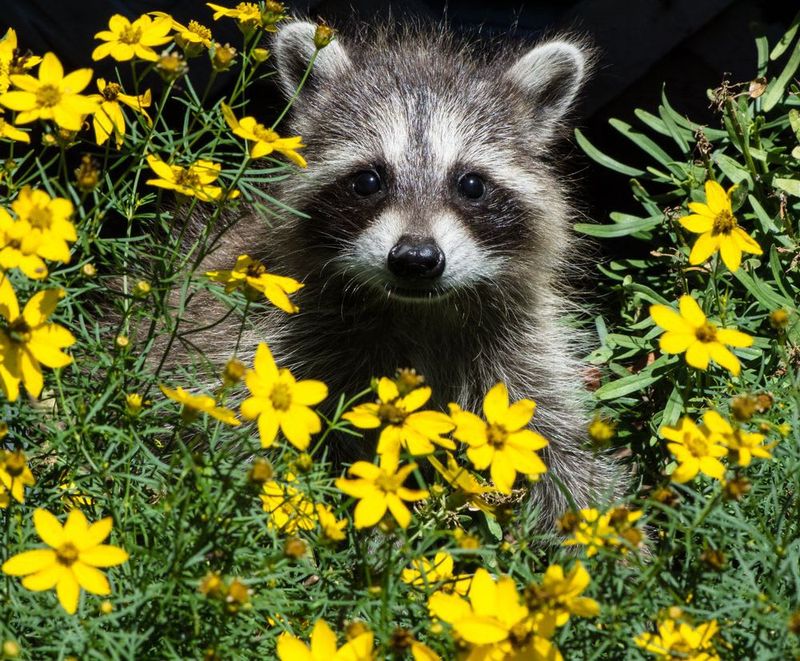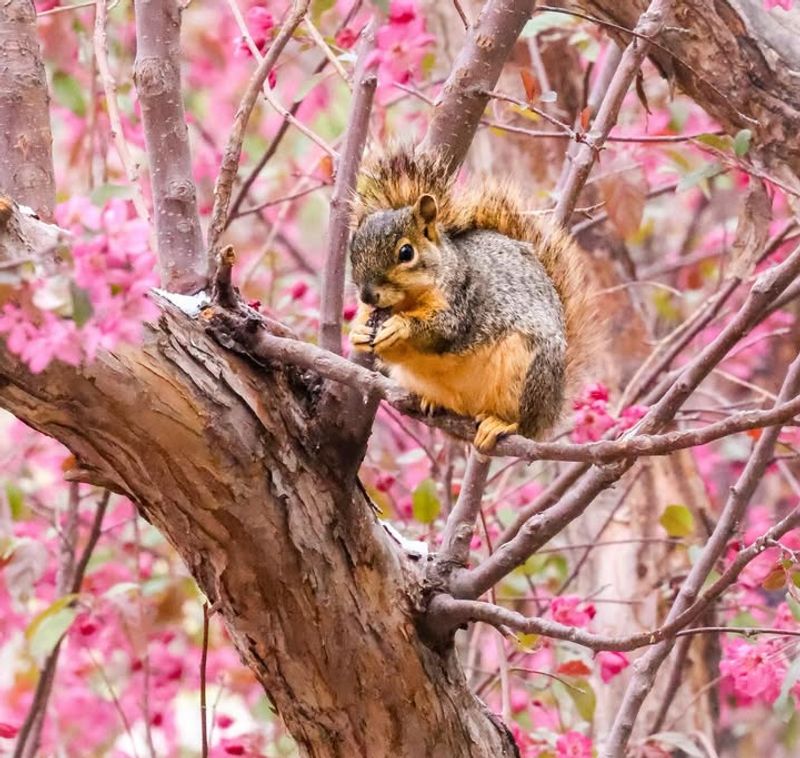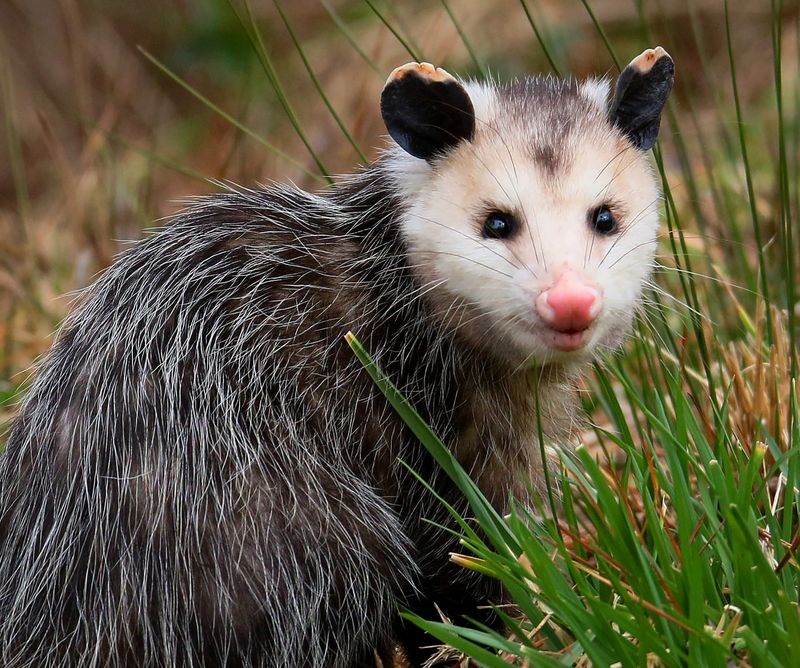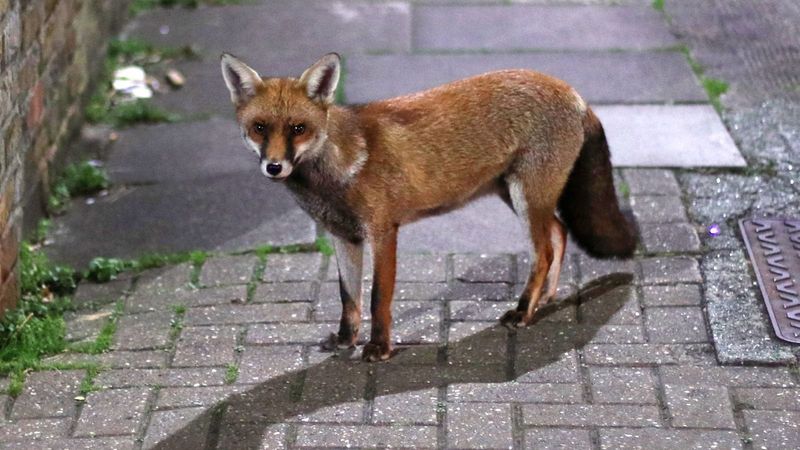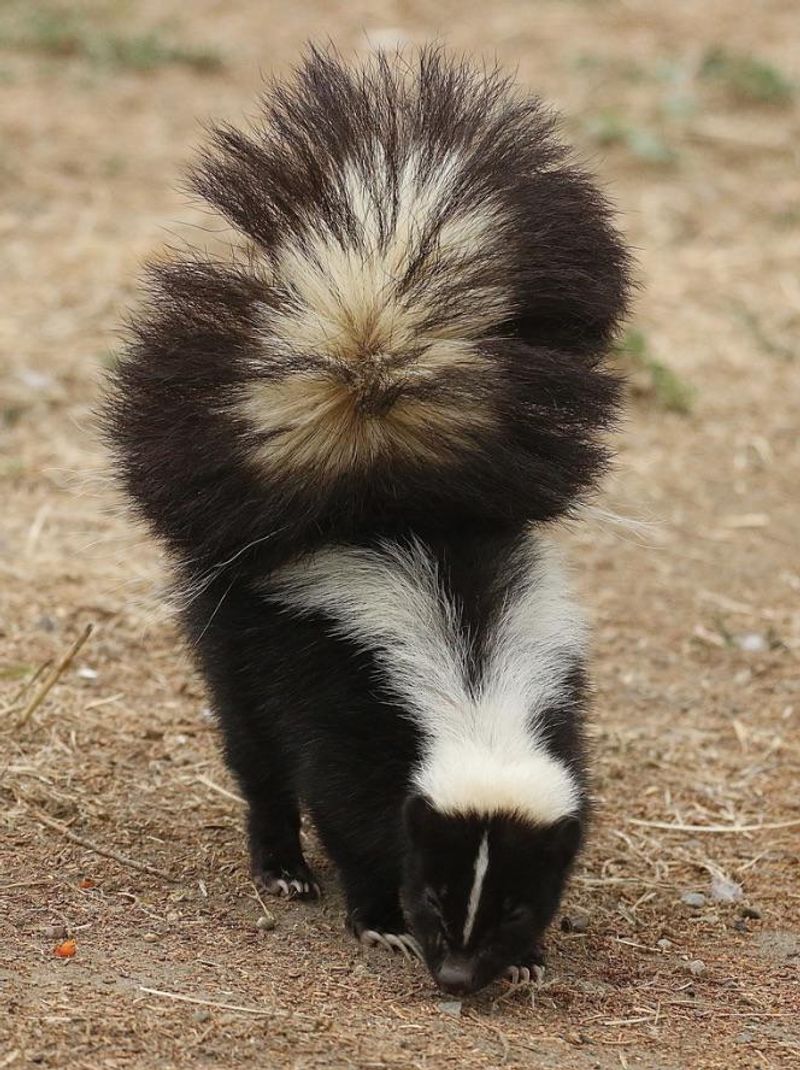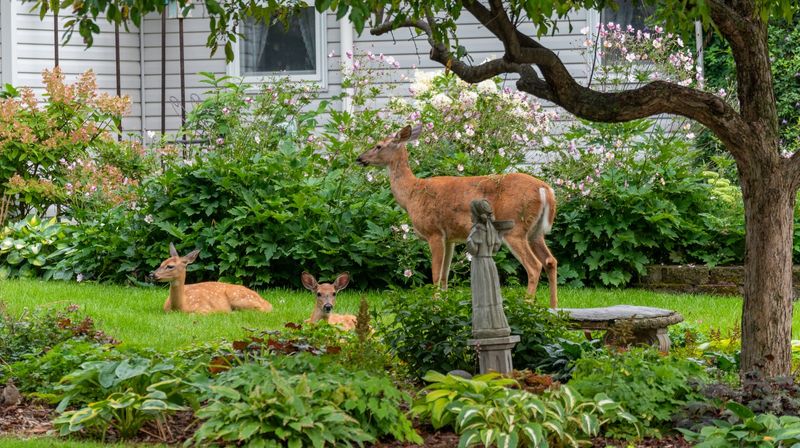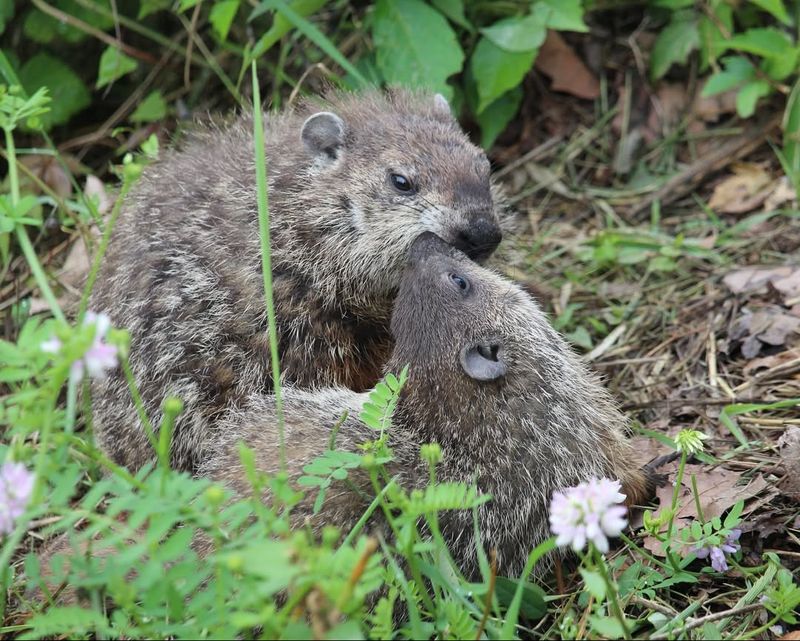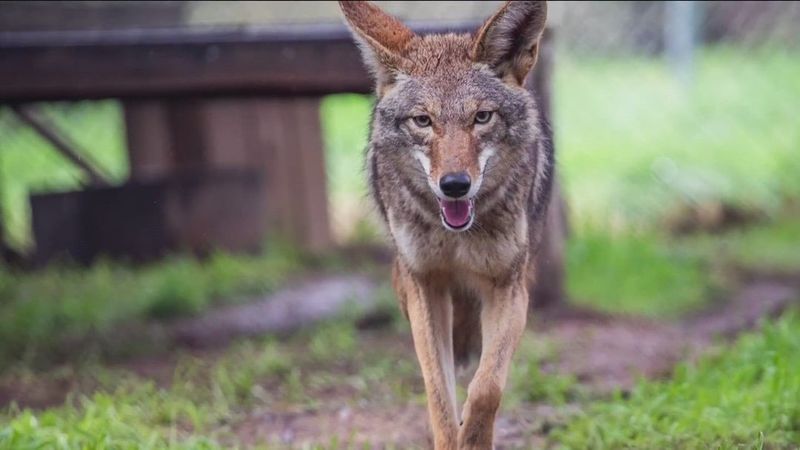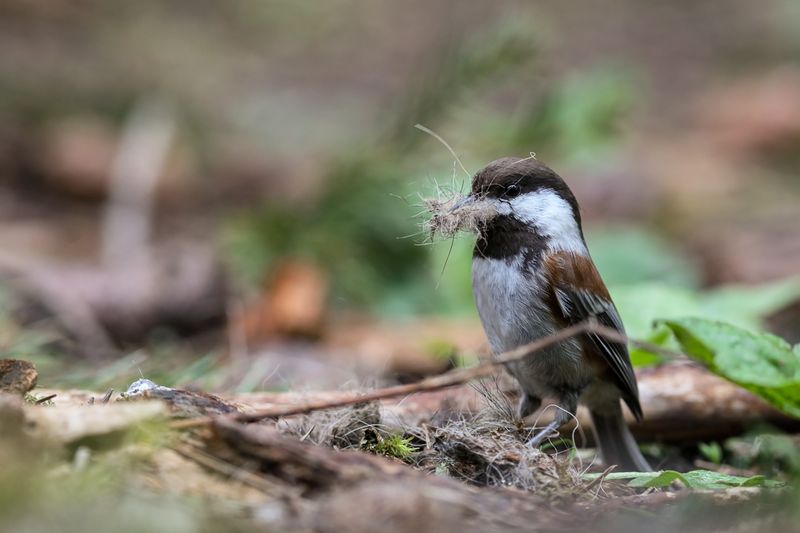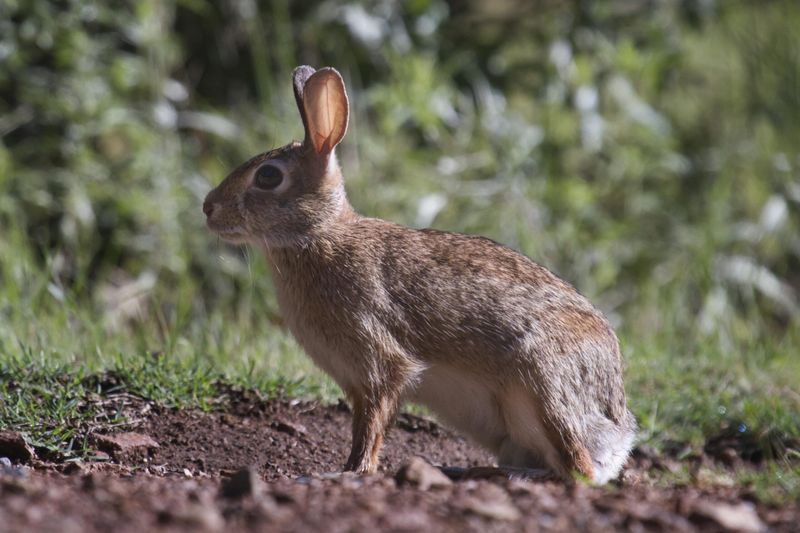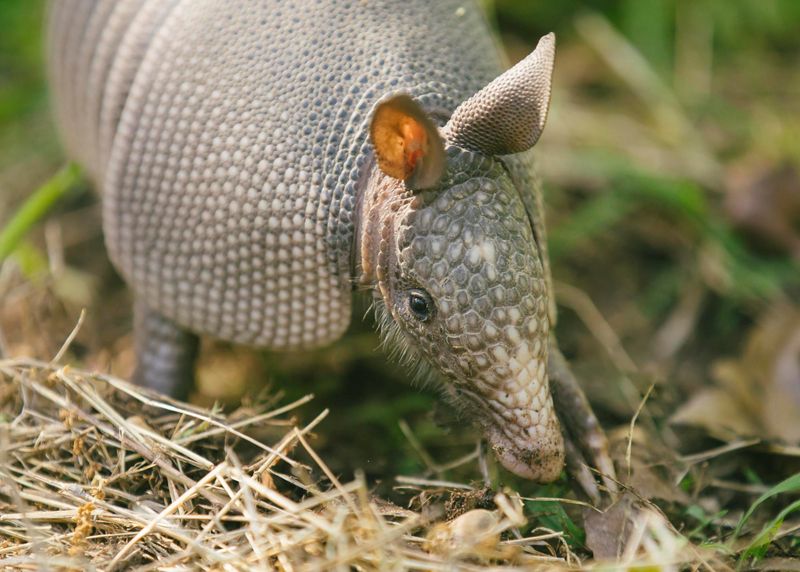South Carolina’s cities are experiencing a wildlife boom unlike anything we’ve seen before. As urban areas expand into natural habitats, many wild animals have adapted remarkably well to city living.
From your backyard to neighborhood parks, these creatures have found ways to thrive alongside us, creating surprising encounters for homeowners across the Palmetto State.
1. Raccoons Scavenging Near Flower Beds
Those masked bandits visiting your garden aren’t there for the flowers – they’re after the grubs and insects hiding in your soil! During my evening gardening sessions in Greenville, I’ve spotted these clever creatures methodically turning over mulch.
Their dexterous paws work like little hands, making them experts at opening trash cans and pet food containers. Many South Carolina homeowners mistakenly think raccoons are nocturnal, but they often venture out at dusk.
To discourage these midnight raiders, secure garbage bins with bungee cords and avoid leaving pet food outdoors overnight.
2. Squirrels Enjoying Garden Trees
Gray squirrels have become the unofficial mascots of South Carolina neighborhoods. Last summer, a family of five took up residence in the oak tree outside my Charleston home, entertaining us with their acrobatic jumps between branches.
Unlike many urban animals, squirrels are active during daylight hours, making them highly visible backyard residents. They cache thousands of nuts and seeds annually, inadvertently planting trees when they forget retrieval spots.
The squirrels in your yard might be helping with garden diversity – I’ve discovered volunteer oak saplings that these bushy-tailed planters unknowingly started!
3. Opossums Seeking Shelter In Shrubs
America’s only marsupial has found comfortable accommodations in South Carolina cities. These misunderstood creatures get a bad rap for their appearance, but they’re actually garden allies that consume thousands of ticks yearly.
My Columbia neighbor discovered an opossum family nesting beneath her azalea bushes last spring. Rather than removing them, she welcomed these natural pest controllers. Their slow metabolism makes them resistant to snake venom and rabies – a rare quality among mammals.
When startled, opossums may bare their teeth or “play dead,” but they’re generally docile and prefer avoiding confrontation with humans.
4. Urban Foxes Roaming Residential Streets
Red foxes have adapted brilliantly to South Carolina suburban life. Their rusty-orange coats sometimes flash through my Spartanburg neighborhood at dawn, a surprising reminder that wildlife thrives even in developed areas.
These intelligent canids establish dens under sheds, decks, or in dense vegetation. A family with four kits made their home beneath my neighbor’s garden shed, emerging each evening for hunting lessons.
Foxes help control rodent populations naturally – one fox can consume several thousand mice annually! They’re generally shy around humans but may become bolder if accidentally fed or if food sources like unsecured garbage are available.
5. Skunks Foraging On Lawns
Despite their notorious defense mechanism, striped skunks provide valuable garden services by controlling grubs and insects. My Myrtle Beach garden had a persistent Japanese beetle problem until a resident skunk began nightly visits.
You’ll recognize their presence by small, cone-shaped holes in your lawn where they’ve dug for beetle larvae. Contrary to popular belief, skunks don’t spray indiscriminately – they give multiple warnings like foot-stamping and tail-raising first.
Motion-activated lights can discourage skunks from settling in, though many South Carolina gardeners appreciate their natural pest control abilities and learn to coexist peacefully.
6. Deer Grazing In Suburban Gardens
White-tailed deer have become increasingly common visitors to South Carolina neighborhoods. Last month, I watched a doe and two fawns calmly browsing my neighbor’s hostas in our Hilton Head community – seemingly unfazed by nearby human activity.
Urban deer populations have exploded as predators decreased and food sources increased through landscaping. They’re particularly fond of tender garden plants, vegetable gardens, and ornamental flowers that homeowners work hard to maintain.
Motion-activated sprinklers offer a humane deterrent for persistent deer. Alternatively, planting deer-resistant species like lavender, yarrow, and Russian sage can protect your garden while maintaining its beauty.
7. Groundhogs Tunneling Near Perennials
Also known as woodchucks, these rotund rodents have expanded their range into South Carolina’s suburban areas. My sister’s Rock Hill garden became home to a particularly industrious groundhog who constructed an elaborate burrow system beneath her perennial bed.
Despite their destructive reputation, groundhogs can be fascinating to observe. They’re one of the few true hibernating mammals in our region, spending winter months in deep sleep underground.
Groundhogs prefer vegetation borders where they can quickly retreat to safety. Their extensive tunneling aerates soil but can damage plant roots and create hazardous holes in yards.
8. Coyotes At The City Edge
The howl of coyotes has become increasingly common along South Carolina’s urban-rural boundaries. These adaptable canines have established territories in greenbelts, parks, and undeveloped pockets throughout our cities.
Walking my dog at dusk in Greenville’s Cleveland Park, I spotted a lean coyote watching us from the tree line – a reminder that wild predators now share our urban spaces. They primarily hunt rodents and rabbits, actually helping control pest populations.
Keep small pets supervised outdoors, especially at dawn and dusk when coyotes are most active. Removing potential food sources like unsecured garbage or pet food helps discourage these opportunistic hunters from frequenting residential areas.
9. Songbirds Nesting In Backyard Trees
Carolina chickadees, cardinals, and mockingbirds have found safe havens in South Carolina’s urban tree canopy. My backyard in Florence hosts at least six different species, their morning chorus creating nature’s alarm clock.
Native trees and shrubs provide essential nesting sites and food sources. The Carolina wren pair that built their nest in my porch fern last spring returned this year, raising another brood in the same location.
Offering fresh water and native plants that produce berries or seeds will attract more feathered visitors. Reducing pesticide use helps ensure abundant insect populations that songbirds need to feed their young.
10. Rabbits Hiding Among Bushes
Eastern cottontails have multiplied throughout South Carolina neighborhoods, finding perfect habitat in our manicured landscapes. Their ability to reproduce rapidly means a single pair can potentially produce 20+ offspring annually!
From my garden in Beaufort, I’ve watched rabbits create shallow depressions called “forms” beneath shrubs where they rest during daylight hours. Their presence becomes evident through nibbled plant stems cut at 45-degree angles.
While they sometimes damage vegetable gardens, rabbits also disperse seeds and provide food for predators like hawks and foxes. Chicken wire barriers around prized plants offer protection without harming these fuzzy garden visitors.
11. Armadillos Digging Around South Carolina Yards
These armored diggers have steadily expanded northward into South Carolina over recent decades. My first armadillo encounter happened last summer when I discovered distinctive cone-shaped holes across my Columbia lawn one morning.
Armadillos tunnel in search of grubs, worms, and insects, creating characteristic disruptions in well-maintained yards. Their poor eyesight but excellent sense of smell makes them particularly active after rainfall when soil-dwelling creatures rise closer to the surface.
While their digging can frustrate gardeners, armadillos provide natural aeration and insect control. Creating barriers around garden beds with buried hardware cloth can protect special plantings.

